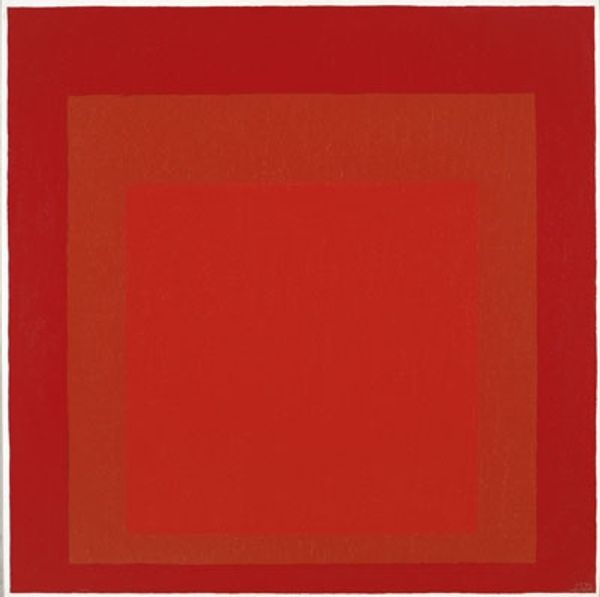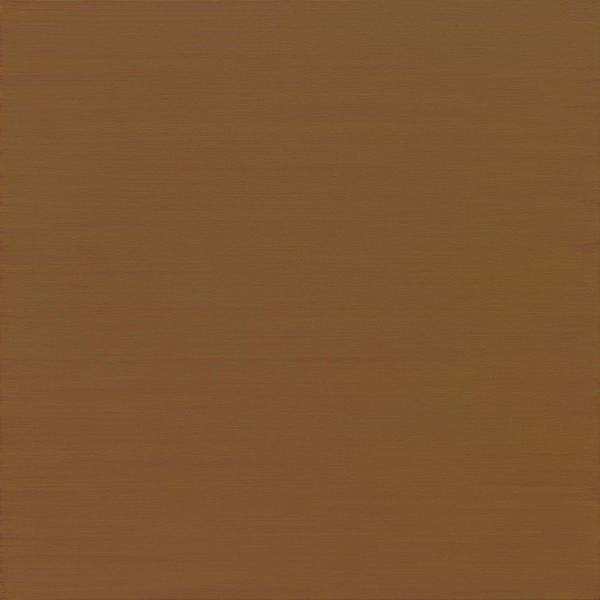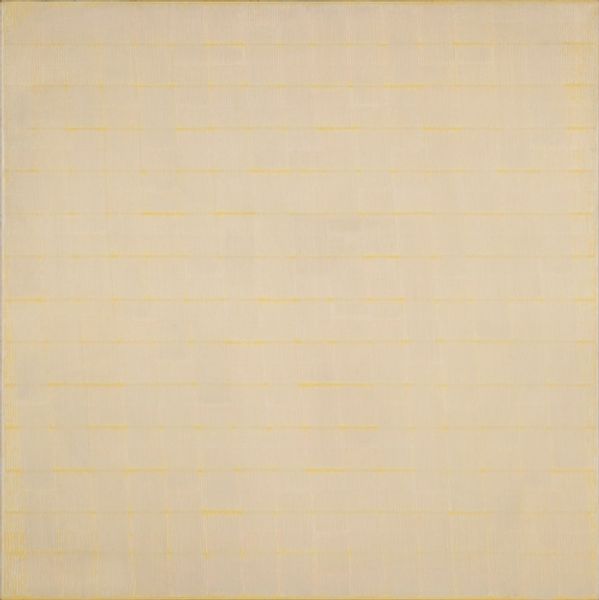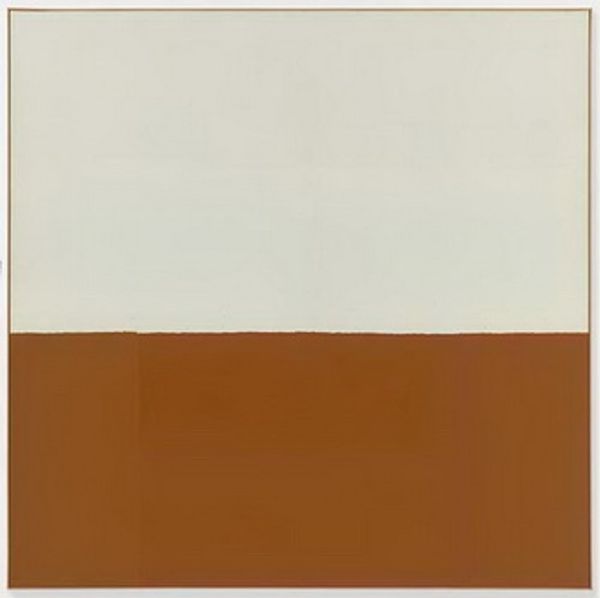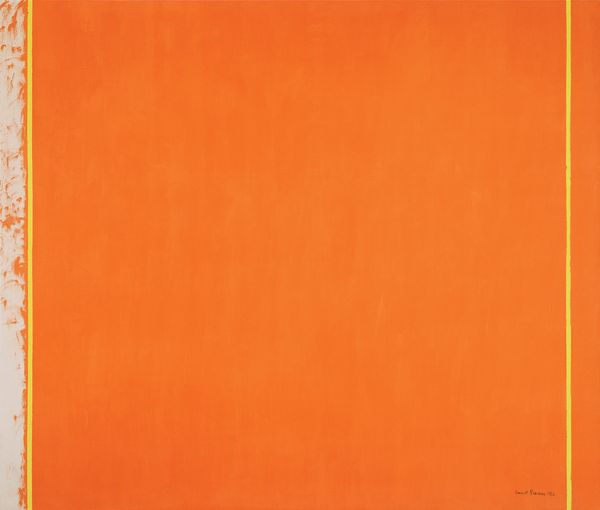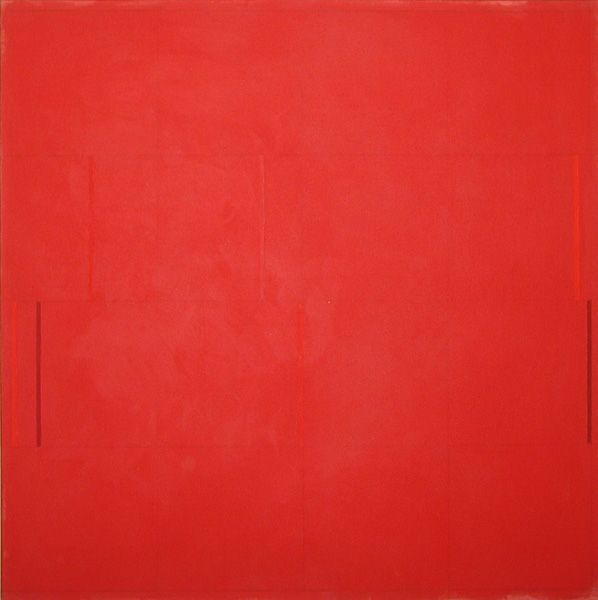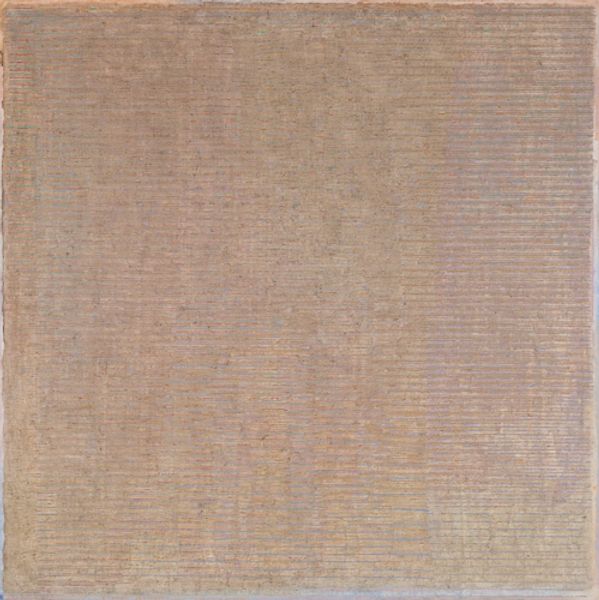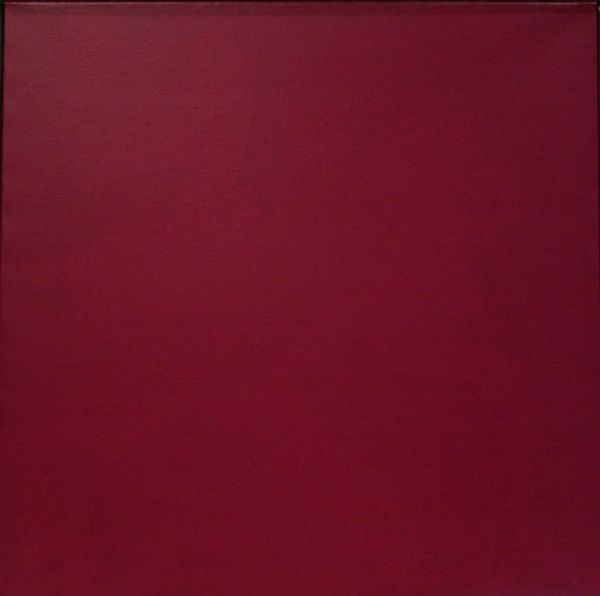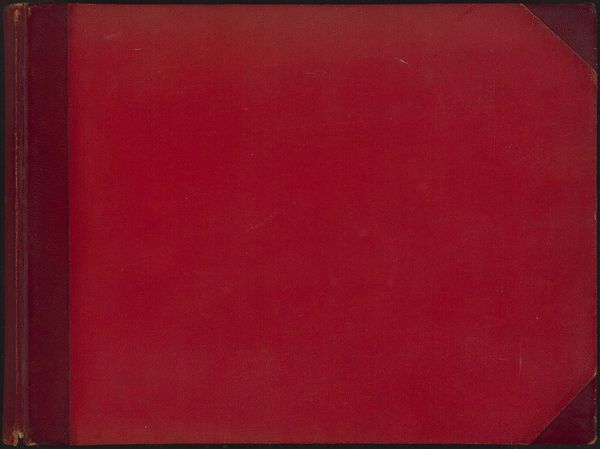
Copyright: Warren Rohrer,Fair Use
Curator: Well, what a vibrant hue! What are your first impressions? Editor: It’s incredibly arresting. That single field of saturated orange; it's like staring directly into a sunset. There is also some fine texture there. I see horizontal strokes in the paint application. It also has that beautifully softened edge between colors. Curator: Indeed! This is Warren Rohrer’s "Ripe Wheat" painted in 1972. Rohrer was deeply embedded in the Color Field movement and a central figure in the Philadelphia art scene. He would have been responding to abstract expressionism. The materials, if I recall correctly, are acrylic on canvas. Editor: “Ripe Wheat,” you say? How fascinating. I see it now—there's that sense of harvest, of warmth, of late summer. And in abstract form, the saturation becomes all the more powerful. The chromatic intensity is doing all the work to invoke a theme. It verges into monochrome, but I'd say it earns the Color Field moniker. Curator: I'm curious about what you make of its reception at the time. While the art world’s center was focused elsewhere, particularly on New York and later Los Angeles, Rohrer helped to foster a more local engagement. I would add, his engagement with his Mennonite faith influenced the geometric order within these canvases. The quiet reverence comes through despite its loud hue. Editor: Yes, I can definitely feel that tension; that paradoxical loudness-in-quietude. It’s compelling that you bring in the faith angle because there’s a meditative aspect here too, even within the screaming orange! Formally speaking, I’m fascinated by that liminal space between the shades, and that texture. I could stare into this a long while. Curator: He provided a crucial touchstone within Philadelphia, a demonstration of the continuing vitality of abstraction outside the major metropolitan hubs. It offers a glimpse into the wider story of American art. Editor: And through this lens of cultural awareness, you reveal something much more significant about the impact and context of this particular canvas, which, on the surface, presents itself so purely through form and color. It makes me want to spend even more time considering the nuance!
Comments
No comments
Be the first to comment and join the conversation on the ultimate creative platform.


